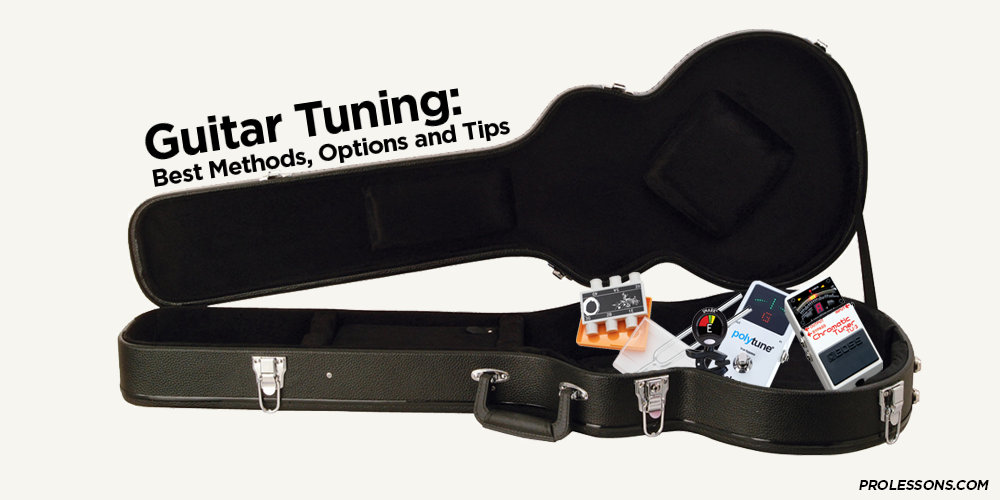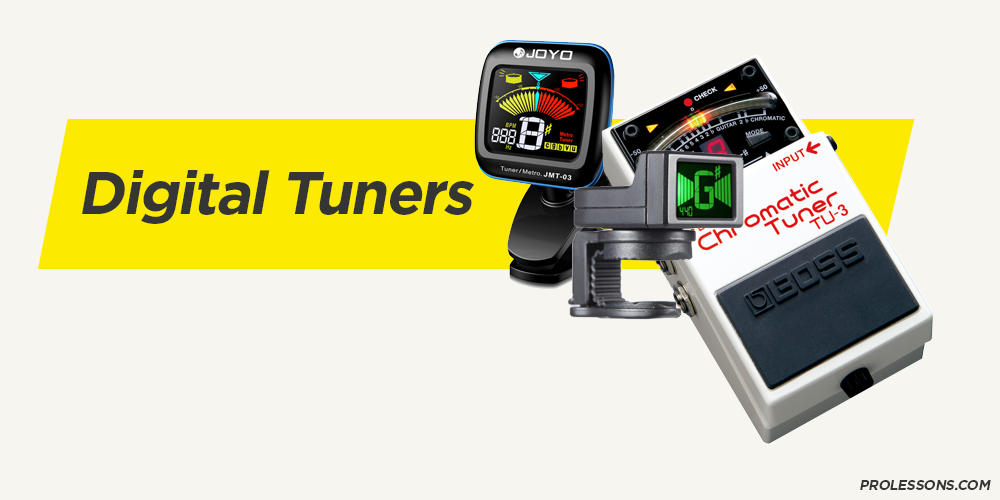FREE LESSON
PHIL KEAGGY - Grammy nominated and seven-time Dove Award winner, is one of the world’s great guitar players and a pioneer in contemporary Christian music.

In Guitar Tuning, A440 is the standard and most recognized pitch in Western music. That’s the first thing to remember as some tuners and or pitch pipes might not be perfect A440. We’ve used multiple tuners and it is possible that one of them might not be just right. Some of the foreign made tuners are just not calibrated right and there’s no way to adjust some of them.
There are several ways to tune your guitar. In this article, we will break down all the guitar tuning methods for you. For starters, you need your guitar strung properly. The small “E” or 1st string, then “B,” the second string, then “G,” then “D,” then “A,” and finally big “E.”
If you’re tuning to an acoustic piano, you wanna make sure it’s in tune in the first place. A keyboard would be better. Alright, so sit in front of your keyboard and let’s get started. With a pick, strike your little “e” or 1st string. Hit the E note just above middle C. Make your 1st string match the E note perfectly by turning your tuning peg up or down. Make sure you’re turning the correct tuning peg.
Then, hit the B note below middle C and make your 2nd string match the B note perfectly. Alright, now the G note below the middle C should match your 3rd string, then the D note below middle C should match your 4th string, now the A note below middle C should match your 5th string and finally the E note below middle C should match your big E or 6th string. If you did a good job making them match, you’ll be tuned up and ready to play

Pitch pipes usually come with all 6 notes represented and you just blow into the pipe at each note's position and make each string match the note being blown. It’s very similar to the keyboard method. Just make sure your mouth is over the right note. Some pitch pipes have the 12 semitones so watch out for those #’s and b’s.
A pitch fork is not for the faint of heart. You strike it on your knee or some fairly soft but firm surface and it rings whatever pitch you have. Hopefully it’s an E tuning fork. And, unless you have a fork for each note on the guitar, you’ll then have to tune the rest of the strings to the 1st or little “e” string. We’ll get into this method in the next paragraph.
If you have a “e” pitch fork, or some other device to give you an “e” note, or if you just wanna tune the guitar to itself, here’s the way you can do it. Place one of your fingers on the second string at the 5th fret. Strike that note and then your 1st string note. Make your 1st string match your 2nd string note which has the finger on it at fret 5.
Once they’re perfectly matched, then move your finger to the 3rd string 4th fret. Make the 3rd string note you’re holding match the 2nd string which is now open. Alright, place your finger on the 4th string at the 5th fret and make your 4th string note match your 3rd string note which is now an open string. Now move your finger up to the 5 string at the 5th fret. Make that note match your 4th string which is now open.
Finally, move your finger up to the big “E” string at the 5th fret. Make it match the 5th string which is now an open string. If you do this slowly and methodically, and get the pitches matching just right, You may not be in perfect A440, but the instrument will be in tune with itself. You might have to got through this process a couple of times to get it just right.
Most tuners have a built in mic or something to pick up vibration. You’ll want to hold your tuner real close to the guitar near the sound hole if it’s acoustic and plug it in with a guitar cable if it’s electric.
The tuners with a needle are real accurate. It should say A440 at the center of your screen. Just strike your little “e” string and make sure you're already close to the “e” pitch. The tuner should light up that note if your close. Then, just watch the needle. If it’s above the note, you’re sharp. If it’s below the note, you’re flat. You’ll just turn your tuning peg for the little “e” string up or down till the needle sits still perfectly at A440 or straight up in most cases.
Do each string the same way.

As we mentioned above, some of these foreign made tuners might not be calibrated just right, but most are correct. So, either hold it close to your guitar or if it has a clip on device, just clip it on your head stock, up where your tuning pegs are. Make sure you can see it good and start with the little “e” string. Strike the string and make sure the tuners reads “E” on the screen. There should be arrows or some LED light that moves back and forth.
You’ll simply need to tune your little “e” string till it’s perfectly on E pitch. The tuner usually lights up GREEN when it’s spot on. Repeat this process for each string and make sure it says E for the 1st string, B for the second string, G for the 3rd string, D for the 4th string, A for the 5th string, and E for the 6th string. If your string isn’t close already, you’ll have to tune your string up or down till it reads the corresponding note you’re trying to tune. This will take some getting use to but you can do it. Don’t be afraid to ask for help, guitar tuning can be tough.
Guitar tuning is step one to sounding like a believable guitarist. You can play fairly well but if you’re out of tune, it’s just painful to the listener and that’s the truth. When you get your guitar, go ahead and invest in a good tuner. They range from $30-$130. A cheap one is fine, just get one and learn to use it. Some acoustic guitars come with tuners built in and hey, some new Gibson’s come with tuning pegs that tune themselves. Wow!
Check out some of the best tuners here. Also, don’t forget to click on the link below and let our pro’s walk you through step by step with the propers methods to tune your guitar. You’ll be glad you did.